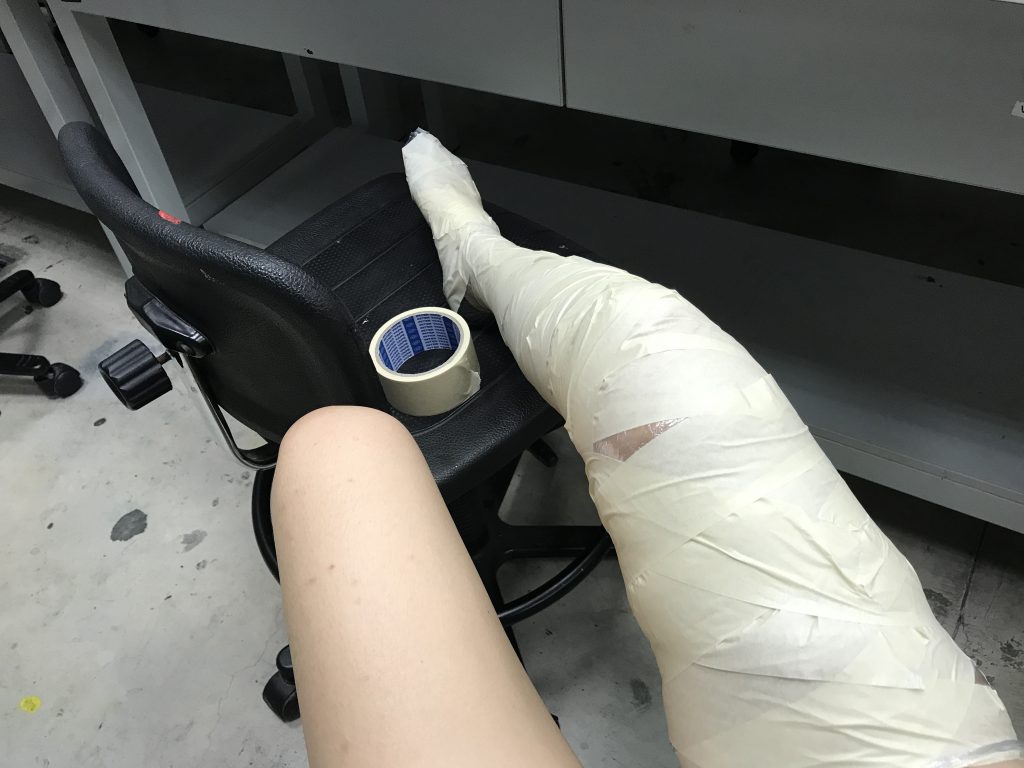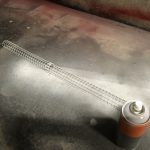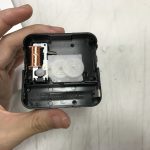Creating comfort; comfort blankets
As it was important to me that the idea of ‘creating comfort’ for oneself be portrayed in the installation, I wanted the hand-make a comfort object, as opposed to simply finding a suitable one and buying it. I found some simple instructions on how to crochet a blanket here:
It seemed very manageable.
The original plans were to crochet a full-sized blanket to place in the installation. However, due to time and money constraints only a baby-sized blanket/adult sized shawl was possible. Which actually doesn’t matter too much as it does not take away from the idea of ‘creating comfort’ for the self.
It was also important to me that the idea of ‘failing’ be portrayed in the work as well, because in trying, things are not always smooth sailing and things are not always beautiful.


Altering space
In continuation of the last film, wanted to extend the idea of altering space and perceptions of a space through altering the lighting of the space. Continuing the play on blue light, I altered existing light fixtures by taping blue cellophane over the bulbs to create the blue light.

Trying out different modes of lighting and evaluating the shape of the lighting fixtures, I found that a lamp like the one above gives off a more ‘homely’ feeling, which marks it as a homely and safe object.
However, as I wanted the blue light to embody the element of a foreign, dangerous object, I used a different light instead.

I also played with the placement of the light. Above, I placed it in one corner of the space. Below, it is placed horizontally on the wall. When placed like it is below, it seems more as if the light belongs in the space like all ceiling lights do, rather than above, where it sits in a corner – removed from its natural environment (on the ceiling), and therefore can better act as an ‘object of danger’.
I also wanted to put the idea of danger across more strongly, and so thought of creating an accessory that could go onto the light to imply its dangerous nature.
Usually, dangerous objects are kept out of reach, and usually, there is a barrier between said dangerous object and the person so to ensure the safety of the user. As such, borrowing this idea of a safety barrier, I decided to create a metal netting around the light to imply its dangerous nature.

Further altering space
In order to further imply the idea of an alternative space, I thought of ways to imply the other-worldliness of the blue space. In particular, I was quite keen on the idea of playing with time as an element and using physical clocks to imply this idea. As such, I bought IKEA clocks to see how I could use both clocks to imply different spaces.
I thought of the idea of altering time – either slowing down time or reversing time to portray this idea of ‘other worldliness’. At first, the idea of slowing down time seemed the most fitting, as I wanted to convey an idea of a sluggish mindstate and an inertia associated with sadness and loneliness. However, I realized that this was not impactful enough and that there is some difficulty in portraying a duality between ‘real world’ and ‘subjective world’ – if one clock were to run slower, it would run so slow that the time would be completely out of sync with the other clock and the presence of two contrasting times would confuse the viewer and might lead the viewer to interpret the installation inaccurately (different time zones? weak battery in one clock?)
As such, I wanted both clocks to portray the same time, except that one is mirrored to the other in order to convey the idea of an alternative, reflect world – another dimension – a subject headspace inaccessible by most.


It is quite easy to reverse the clock. Usually, there is a ferrous core in the inside that just needs to be flipped in order for the mechanism to switch. Just gotta keep track of the gears and where they go.

Implying presence
To really tie it back the idea of ‘subjective space’ as perceived by a human being, I felt that elements of human presence must be implied. First, I thought of stuffing the comforter to imply a human presence under the comforter.


It was a good idea at first, but I realized that the shape of the limbs did not show very well. The only way to really imply their shape was to really tuck the blanket under the legs. But that created a lot of creases in the blanket, which made the set up look very haphazard and distracting.
Instead, I thought of implying presence in a different way instead – creating positive space rather than creating an invisible negative space.
Casting hollow hands with plaster bandages.
This was the original placement I wanted to have the hands be placed in. However, I realized that the position of the left hand is very passive, which makes it look kind of floppy and dead. As such, I casted a second hand to be placed in a more active position of holding the piece of crocheting.


Setting up – before lights















